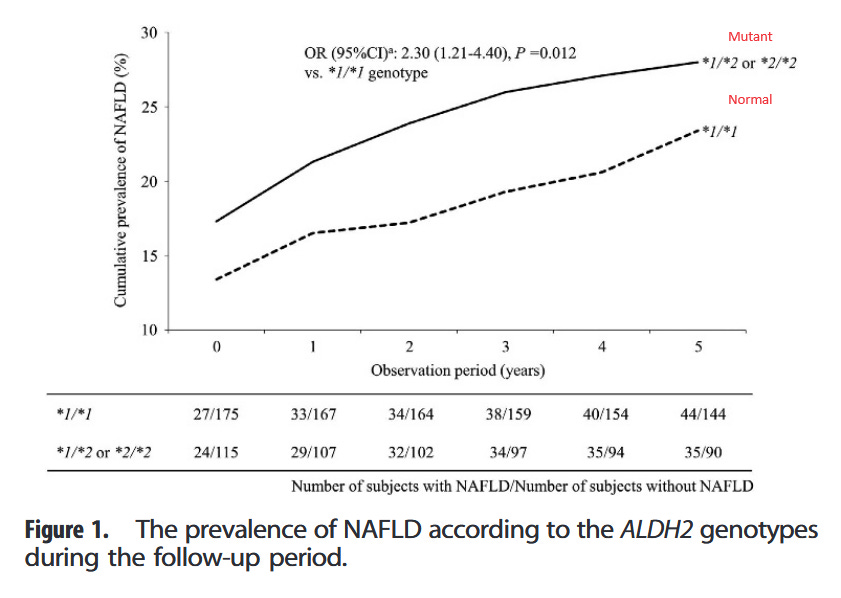Quick Study Analysis: Do Seed Oils Cause Fatty Liver Disease?
Human knock-out models can be very helpful in determining if an environmental factor like diet drives a disease.
We know that IV infusion of soybean or other seed oils causes fatty liver and insulin resistance in humans. (Puder, 2010)
The biggest modern change in the human diet is an increase in soybean and other seed oils. (Blasbalg et al., 2011)
So is the enormous increase in fatty liver caused by the increase in seed oils?
Luckily, we have a human genetic knock-out model.
People with the ALDH2*2 mutation are less able to detoxify seed oils than others.
"Aldehyde dehydrogenase 2 (ALDH2) expressed in the liver detoxifies toxic aldehydes, such as acetaldehyde, 4-hydroxynonenal and malondialdehyde (derived from alcohol and/or generated by lipid peroxidation), and has a key role in protection from oxidative injury." (Oniki et al., 2016)
The latter two (bolded) are produced from seed oils.
Are carriers of this mutation thus more likely to get fatty liver (NAFLD)?
As expected, yes.
In those with the highest level of liver disease, as measured by GGT, the odds ratio is 4.28.
"The logistic regression models showed that the longitudinal risk of NAFLD was significantly higher in the ALDH2*2 allele carriers than in the noncarriers (Figure 1), and the risk was further increased among the *2 allele carriers with a GGT level of ⩾ 25.5 IUl−1 (Table 1)."
For those who don't drink, the risk was even higher, an odds ratio of 6.25:
"Among the 159 nondrinkers, the logistic regression models showed that the longitudinal risk of NAFLD also increased in the ALDH2*2 allele carriers (odds ratio: 4.52, 95% CI: 1.45–14.08) and in those with a GGT level of ⩾ 25.5 IUl − 1 (odds ratio: 6.25, 95% CI: 1.58–24.69)."
GGT is, incidentally, another marker for seed oil toxicity.
Linoleic acid is not mentioned in this paper.
References
Blasbalg, T. L., Hibbeln, J. R., Ramsden, C. E., Majchrzak, S. F., & Rawlings, R. R. (2011). Changes in Consumption of Omega-3 and Omega-6 Fatty Acids in the United States During the 20th Century. The American Journal of Clinical Nutrition, 93(5), 950–962. https://doi.org/10.3945/ajcn.110.006643
Oniki, K., Morita, K., Watanabe, T., Kajiwara, A., Otake, K., Nakagawa, K., Sasaki, Y., Ogata, Y., & Saruwatari, J. (2016). The Longitudinal Effect of the Aldehyde Dehydrogenase 2*2 Allele on the Risk for Nonalcoholic Fatty Liver Disease. Nutrition & Diabetes, 6(5), Article 5. https://doi.org/10.1038/nutd.2016.17
Puder, M. (2010). Infant Parenteral Nutrition–Associated Cholestasis: A Severe Iatrogenic Disease. Journal of Parenteral and Enteral Nutrition, 34(1), 94–95. https://doi.org/10.1177/0148607109332774






